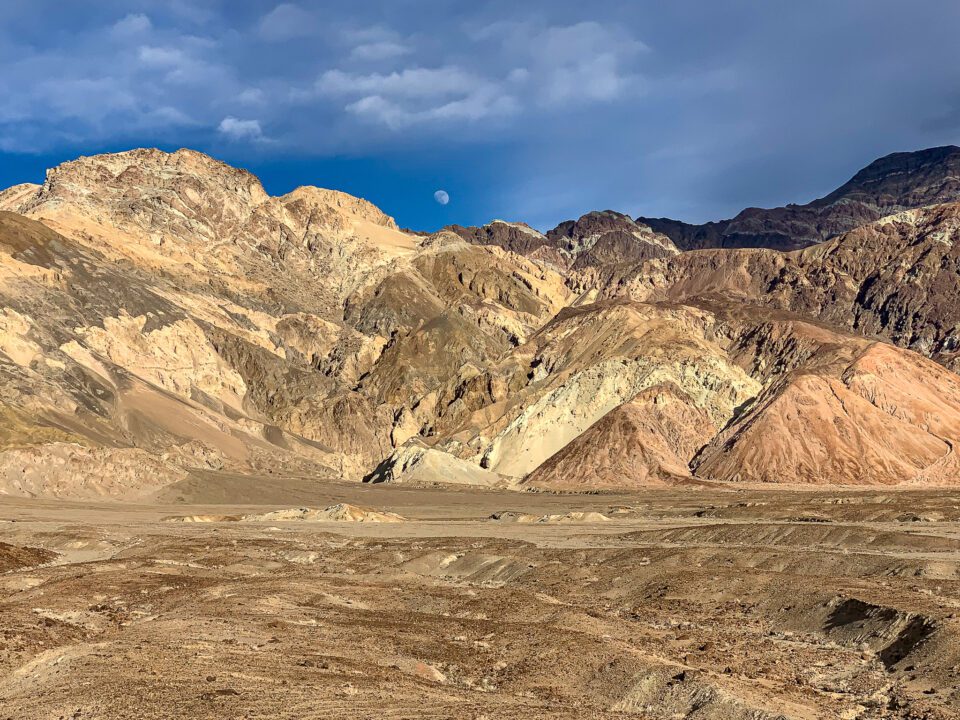The Smartphone vs. the Camera Industry
If you have not had a chance to see my iPhone X review, I recommend that you start there first. This post is a continuation of my thoughts on the photography market, computational photography and the use of artificial intelligence in photography. It is not a review of the iPhone XS or XS Max, although all the images in this article are from these devices. Think of this post as a gallery of images, with some distantly related thoughts mixed in.
Is Smartphone Really a “Smartphone”?
Back in the day, a phone was just a phone… A physical device that let us make and receive phone calls. In my childhood, calling someone meant picking up a handset, then picking a number from the rotary dial, inserting the index finger into the number hole and pushing the dial clock-wise until the index finger reached a metal “end” bar. We had to do that with each digit in a phone number, then wait in between for analog “clicks”. Then would come a long pause, before we finally heard rings in the telephone. If there wasn’t anyone on the other side to pick up the phone, it would just keep on ringing… Fun times to remember, but my kids have no idea what an analog phone even is. Give them the rotary phone and they will look like the kids in this video:
I remember my first time seeing an answering machine. It was a large, separate device with a tape recorder that you had to put on the same telephone line. The ability to leave a message was so confusing for many who didn’t know what it was. It was actually comical to hear all the calls with people trying to “talk” to the answering machine. “Hello? Can anyone hear me?” – such voicemails were fairly common.
Then right as we started getting used to answering machines, came the first “digital” phone. Instead of a rotary dial, you could now simply press a number on a keypad and the phone would do all the work. Except our phone systems weren’t upgraded for a number of years after that, so you would still hear the same clicking analog noises! When “tones” finally arrived to our national phone system, we already had those amazing “two-in-one” wireless Panasonic phones with built-in answering machines. That, to us, was such a huge leap – you could now walk around your house and talk to someone without tripping over a phone wire.
I remember the first time I saw someone use a cell phone. It was a huge “brick” with a very long antenna that they had to pull out when they made calls or received them. Oh, and they also had to pop it open! For me, even thinking that one could make a call while driving in a car was already mind-blowing.
Now compare all this to a modern smartphone. The word “phone” is still part of the word, but how much do we actually use it? The younger generation isn’t really using smartphones for making calls – most of their communication has shifted to digital messages and social media.
And I don’t blame them. In the USA, phone calls seem to have shifted to robocalls, the “new” spam. I do not understand why we have to live with robocalls and why the government is not mass-banning them. I personally don’t pick up any calls from unknown numbers anymore, because each time I do, it is either a huge loan that I qualify for, or an extended warranty of some kind. At the end of the year, I get bombarded with companies wanting to sell cheap healthcare plans. Most of these calls are illegal, according to the FTC. Sadly though, just like email spam that never stopped, robocalls do not seem to be going away anytime soon.

iPhone XS Max @ 4.25mm, ISO 25, 1/150, f/1.8
Anyway, I got sidetracked a little… Ah, the smartphone! Is that what we should keep calling it? From the standpoint of its functionality, the smartphone is more of a camera / personal computer now. It takes excellent images and video, it works sufficiently well for email and web browsing, and it even allows you to use productivity tools. Some smartphones are large enough to have high-resolution screens and others have dual screens, putting them in-between a mobile phone and a tablet, also known as a “phablet”. Long story short, a smartphone is more than a “smart” phone today. And with Apple and other manufacturers pushing more camera functionality into these devices, perhaps they now deserve a newer name like “camerasmartphone”?
Take a look at the newest iPhone 11 Pro. The thing is a beast! With an insanely fast CPU + GPU, it is capable of recording 4K video from all of its cameras, all simultaneously. That’s a lot of processing power on such a small device. Huawei’s Mate 30 Pro is capable of shooting 4K at 60 FPS and slow motion video at 1080p resolution up to 960 FPS. That’s just mind-boggling, considering that none of the modern digital cameras can do this, not even the high-end $5K+ devices.
And here we are, still wondering why the digital camera market is collapsing. Of course it is collapsing – and it will only continue to do so! Why should anyone who wants to take decent pictures suffer through the pain of spending thousands of dollars on a camera system, many hours of learning how to use the camera and how to post-process images from it, when the alternative is to use a small, portable and idiot-proof device that they have in their pockets at all times?
Big Camera Complexity Problem
Let’s review a typical workflow process of a photographer:
- Set up the camera and capture images / video
- Transfer media to a computer with sufficient memory and processing power to handle high-resolution images and video
- Import media into a photo / video application
- Organize and sort media
- Post-process media
- Export media
- Back up
- Print / display / publish media to the web
The problem is not just with the number of steps, but also with the complexity of each one. The first step of setting up the camera and capturing images / video by itself can take many hours of learning. The same goes with importing, organizing, post-processing, backing up and even exporting!
Now compare and contrast that to capturing images with a smartphone:
- Capture images or video with a single button
- Post-process the media using built-in or third party apps
- Publish the media
Anyone can do it. The best part is – there is practically no learning curve. Everything is touch-friendly and the results are instant. All images are backed up to the cloud automatically, so you don’t lose anything in case you lose your device.

iPhone XS Max @ 4.25mm, ISO 125, 1/120, f/1.8
Also, look at all the older generation that is far more comfortable with an iPad than they are with a desktop PC. When my mom moved to the USA, I tried to teach her how to use a computer to keep in touch with the family back home. After several attempts, she gave up. The mouse, all the clicking and typing she had to do, as well as the things that constantly popped up on the screen annoyed and frustrated her very quickly. And then I bought her an iPad… it changed her life. She uses it for everything today and she will never go back to a computer again. Why should she, when there is something easier and simpler to use that she can figure out on her own?
How Media is Consumed
What is your source of media consumption today? For me, and I am sure for many others reading this post, it is either a smartphone or a tablet. For most day-to-day news, I default to my smartphone, since it is always with me everywhere I go.

iPhone XS Max @ 4.25mm, ISO 25, 1/210, f/1.8
Five years ago, desktop users would account for 70% of the Photography Life traffic, with the rest (30% of traffic) coming from smartphones and tablets. Google Analytics says that in August of 2017 (just two years ago), the number of mobile users grew to a staggering 43%, with desktops still being the primary source of traffic. Guess what that number is today? 53%. The desktop is no longer the dominant source of web browsing for our readers.
And this is for a fairly technical photography website! I help run a number of other websites and I can tell you that sites with more generic type of content have already gone through this transformation earlier. For example, one site shows that the number of mobile users in the month of August of 2019 accounted for 79% of all traffic! That’s 8 out of 10 people choosing a mobile device for web browsing.
It is clear that smartphones and tablets have already replaced desktops as devices for browsing the web. How things have changed…
Add social media platforms such as Instagram to the mix and the situation gets even clearer. Instagram now has over a billion active users. That’s a billion smartphone users looking at images that have the resolution of…wait for it…just 1.2 megapixels (1080 x 1080 pixels for a square image)!
What does this mean to us, photographers? Well, it means that the type of content we create is now primarily viewed on small devices with very little resolution. With camera manufacturers pushing 50+ MP sensors and 4K+ video recording capabilities, the question we need to ask ourselves is, who is all that extra resolution for?
Clearly, most consumers aren’t using their 4K desktop screens to check out your photos. And even if they are, you are most likely not even publishing content at that resolution in the first place. Here at Photography Life, we export most images in 2048 pixel long resolution. So if we take the highest resolution image, it would be a 2048×2048 square, which is just 4.2 MP. Most standard content from 3:2 aspect ratio cameras is not going to exceed 3 MP. And yet we constantly talk about all these amazing cameras with super high-resolution sensors…how ironic! It turns out that we end up down-sampling most of our images anyway.
Now I am not implying that high resolution cameras are not needed. There is a definite place for them among enthusiasts and professionals who intend to print very large images. I have already gone through this in my “how much resolution do you really need?” article. Professional landscape, studio and architecture photographers get paid for their work and obviously want to deliver the highest resolution and quality work to their clients. But if you are not one of them, you have to ask yourself – how much of your work do you actually print large? If most of your work ends up on social media platforms such as Instagram, or you print very little, you are potentially wasting a lot of your time and money getting the latest and greatest camera gear.
There is nothing wrong with geeking out about cameras, lenses and all the amazing technology. Many of us are hobbyists and truly enjoy using the best tools (or should we say “toys”?) we can afford. But that’s not what moves the camera market. A typical consumer has already moved away from point-and-shoot cameras, and many are leaving their large cameras at home in favor of a smartphone.
Big Cameras = Big Problems
I have already pointed out one of the biggest issues with digital cameras today – it is their complexity. Let’s take a look at this in a little more detail.
It is clear that the last few years have given us big advancements in camera technology. We have seen huge leaps in image resolution. Thanks to all the CMOS sensor advancements, we now have cameras that can produce amazing dynamic range and very little noise, even when shooting in extremely dark environments. We have specialized cameras with insanely fast autofocus systems, 10+ FPS continuous shooting speeds and huge buffers that can fit hundreds of images. Full-frame cameras are cheaper than ever, and the number of camera options is abundant – both used and brand new. We now have insanely capable mirrorless cameras, with lenses that can out-resolve their DSLR counterparts. Without a doubt, this all sounds amazing and it really is!
However, if we look from the standpoint of someone just starting out in photography, these advantages can quickly turn into a messy list of problems.
Choosing a camera system is a huge task in itself. One has to go through so many different types of criteria, including: camera brand, resolution, sensor size, autofocus system, shooting speed, video features, ergonomics, build quality, weather sealing, price, weight, so on and so forth. Lenses are a whole different ballgame: focal length, zoom vs prime, sharpness, weight, quality, native vs third party, focus speed, price, weight, etc. Add all the must-have accessories like straps, memory cards and support options, and things get progressively more complex.
But that’s just the start of the problem. Once beginners get their first camera system, they quickly realize that their expenses and time commitment do not stop there. All of a sudden, their computers are not fast enough to post-process those high-resolution images and video. Their storage is insufficient. Their computer screens that used to handle web browsing and occasional gaming just fine, are no longer good enough – they now need IPS monitors and screen calibration tools for a consistent editing experience.
Then, as they take pictures, they realize that their cameras and lenses are not as perfect as they thought they would be. They spent thousands of dollars, only to find out that their camera autofocus system is out of whack, their lenses are not good enough to consistently produce sharp images. They find out about all the lens aberrations, field curvature and focus shift issues, lens decentering and other optical problems. DSLR shooters have to learn about lens calibration issues, while mirrorless shooters come across brand new problems related to things like red dot flares and phase-detection striping / banding issues.
And we haven’t even gotten to post-processing, storage and backups. I could go on and on…but you get the point. Digital photography has gotten way too complex for most people. Even seasoned photographers are getting tired of all the things they have to keep up with in order to stay relevant and competitive.
What’s Not Going to Save the Industry
With declining camera sales, all camera manufacturers are suffering. Now that sensor performance has pretty much hit the limits of CMOS sensors and flat-lined, manufacturers are pushing towards more resolution and camera features. Clearly though, this is not enough to push more camera sales.

iPhone XS Max @ 4.25mm, ISO 32, 1/120, f/1.8
In fact, I would argue that unnecessarily increasing resolution will only result in declined camera sales. How much more resolution do we really need, when most lenses cannot resolve that much detail in the first place? I am working on an article that shows some interesting data, but the quick summary of it is that most Nikon F mount lenses cannot resolve more than 24 MP. Only some lenses can truly resolve up to 36 MP and only select few can actually exceed that.
This means that increases in sensor resolution are pretty much meaningless beyond 36 MP for the F mount. Unless lenses are developed from scratch specifically for high-resolution sensors (like those E-mount, RF-mount and Z-mount lenses), increasing camera resolution isn’t going to provide any advantages! You will simply end up increasing RAW file size, and that’s about it…
This brings us to the mirrorless world. Yes, mirrorless cameras are the future for those of us who want to keep up with the latest technology and actually enjoy the benefits of high-resolution sensors. But for many photographers out there, all these advancements are just unnecessary, especially given the cost of moving to mirrorless.
Switching systems is very costly if you want to use native mount lenses. And no matter what some might say about adapters, they will never be as good as native lenses – they are meant to be temporary solutions and compromises. An adapter is yet another piece of gear to carry around, another point of potential failure and another point of attachment that is prone to decentering and other issues.
A solid 24 MP DSLR camera such as the Nikon D750 is plenty for the majority of photo enthusiasts. Why would they need more? Because the marketing departments are working hard on selling them on the latest and greatest. Notice how with each bump in camera resolution, we see all the promo images with crisp details and 100% crops that scream “amazing detail!”. Rumor sites build up the “pre-sale” excitement, while all the YouTube celebrities get to experience launch events with ready-to-shoot sets and free booze to boot. Keep them fed and happy, and they will say nice things to their millions of followers, who will be stupid enough to get into the latest hype.
Some camera manufacturers even think their strategy should be to make an “all-in-one” camera, such as the Zeiss ZX1. We have seen smartphones with large sensors that completely failed. We have seen smartphone attachments with large sensors that failed (remember “DxO One”?). Inevitably, the Zeiss ZX1 will also fail – I just hope it does not bring Zeiss down with it, similar to what happened with DxO.
It is clear that such products are not going to be able to serve as a “bridge” between smartphone and big camera users. It turns out that most consumers don’t give a damn about how large an image sensor on their smartphone is, no matter what manufacturers try to say. When they see huge billboards with “Shot on iPhone” written all over them, they realize that a typical smartphone is good enough for their needs.
And photographers with big cameras don’t seem to care about such cameras either. They are already used to the process of using a separate device to capture images, and a separate environment for editing their pictures.
So for me, such products as the Zeiss ZX1 are products of “void” – gadgets that nobody wants or ultimately cares about.
The smartphones are quickly taking over the camera world, and sadly, there is no stopping it now. I would say that it is already too late for most camera manufacturers to be able to offer a product that a typical consumer would want. Their only hope for the future is to retain their existing customer base. With all the technological advancements, artificial intelligence and cloud computing, the digital camera market is sadly going to continue to decline.
How Smartphones Will Take Over Most of the Camera Market
So far, some of the biggest factors for not wanting to choose a smartphone among serious photography enthusiasts have been: relatively low resolution, little dynamic range, lack of subject separation capabilities / bokeh and lack of specific features we commonly see on DSLR and mirrorless cameras. However, these are mostly temporary concerns that will likely be addressed overtime. Let’s go through these one at a time and assess their potential.
Resolution: We are already seeing quite a few smartphone manufacturers push beyond 10 MP on their smartphones, and this is only the beginning. Going forward, expect to see smartphones with much more resolution. However, as photographers, we know that resolution means very little in the real world – image quality suffers with tiny pixels. There are already smartphones out there that can shoot 40+ MP images, but the resulting image looks no better than from a 10-12 MP smartphone, because the pixel-level quality is just terrible. With AI-based image processors, we will see more “cooking” of resulting images that will improve pixel-level quality. In addition, smartphones might start utilizing sensor shift to take multiple shots and merge them to get better detail.
Noise: Smartphones generally have poor noise performance, especially when shooting in low-light conditions. However, this is already changing with the latest generation smartphones that are able to run noise reduction algorithms to significantly reduce noise in images. The next step from here is simultaneous capture of 4+ images to average them out and create very clean images, even when shooting in dim conditions.
Low-light Photography: The first iteration of “night mode” is already here for both Android and iOS, and it already looks very promising. Smartphones are using multiple exposures captured at different shutter speeds to seamlessly merge them into a single image. Some cameras are even able to shoot extremely long shutter speeds, allowing them to be used for astrophotography needs.
Dynamic Range: Almost every modern smartphone can already capture HDR images. However, we are not far from the next step in dynamic range “revolution”, which involves taking multiple images at different shutter speeds for specific areas of the frame, then fully recovering all the highlight and shadow details. The resulting images would look much more natural compared to HDR photos and could potentially capture unlimited dynamic range.
Subject Separation: Apple and Android platforms are already taking advantage of AI-based algorithms that can use data from one or more cameras in order to separate subjects from the background. The first iterations had a lot of transition problems, but things are improving rapidly. Within the next few years, smartphones will be able to imitate the large sensor “look” quite well.
Focal Lengths: The iPhone 11 Pro has three cameras that cover 13mm, 26mm and 52mm focal lengths. With all the digital zoom options in-between, that’s basically a 13-52mm camera. I expect future cameras to follow suit and provide even more options to cover a bigger range of focal lengths.
It is clear that smartphone manufacturers are putting a lot of their resources towards creating an ideal camera that can capture both images and videos. Camera manufacturers won’t be able to compete with this, especially with their continuously-shrinking budgets and forecasts…
Smartphone R&D > Camera R&D
As technology progresses, the research and development (R&D) budget is going to play a key role in advancing the capabilities of cameras. With the elimination of the high-margin point-and-shoot market, continuous shrinkage of the entry-level market segment and declining demand on new cameras and lenses, camera manufactures are struggling to keep their R&D funds large enough to come up with ground-breaking products. Most cameras are simply being re-released with new labels and only slightly improved specs, which obviously interest a small percentage of potential customers and fans.
Now compare that to the fast-growing smartphone market:
Ouch! That’s 1.5 billion smartphone sales vs 121 million at the peak of camera sales in 2009. Who do you think is going to have more R&D money? Camera manufacturers are in trouble – they are continuously re-adjusting their sales forecasts and for a good reason. Soon enough, we will start seeing mass layoffs and camera division closures. That’s the inevitable outcome of this change. Camera companies experienced rapid growth from 1999 to 2009 and they all thought things are going to look amazing for them. Until smartphones moved in and started taking big chunks of their market share. Most didn’t realize what was happening until it was already too late.
Samsung was smart to pull out of the camera market on time. Sadly, only the strongest will survive this change going forward…
The Future of the Camera Industry
Sadly, the outlook for the camera industry is looking pretty grim. The camera companies that will most likely survive their new enemy, the smartphone, are going to be those who already have a strong client base. They will continue making specialized tools for enthusiasts and professionals, but their profit margins and market shares are going to shrink, while smaller R&D funding budgets will also impact new camera and lens release cycles.
Still, camera manufacturers should think hard about making their cameras easier to use. Instead of increasing the complexity gap between smartphones and specialized cameras, they should focus on what they do best – deliver exceptional image quality with superb ergonomics and simple menu systems. This will at least keep their existing customers from jumping ship.
What does this all mean to us, photographers? Don’t worry – there is little reason for serious concern. These changes are going to happen whether we like them or not, but we have to stay focused and don’t waste our time and money getting the latest and greatest gadgets. Shoot with what you already have and enjoy every moment of it.
P.S. After the launch of the iPhone 11 Pro, some of our readers emailed me, saying that they are selling off their cameras to fully move over to the iPhone 11 Pro. That’s a pretty drastic measure, but something I anticipate to see more and more in the future…
What do you think about all this? Please let me know in the comments section below!
iPhone XS and XS Max
- Optical Performance
- Features
- Build Quality
- Focus Speed and Accuracy
- Image Stabilization
- Image Quality
- High ISO Performance
- Size and Weight
- Metering and Exposure
- Movie Recording Features
- Dynamic Range
- Ease of Use
- Value
Photography Life Overall Rating

from Hacker News https://ift.tt/2LKFKSl






















